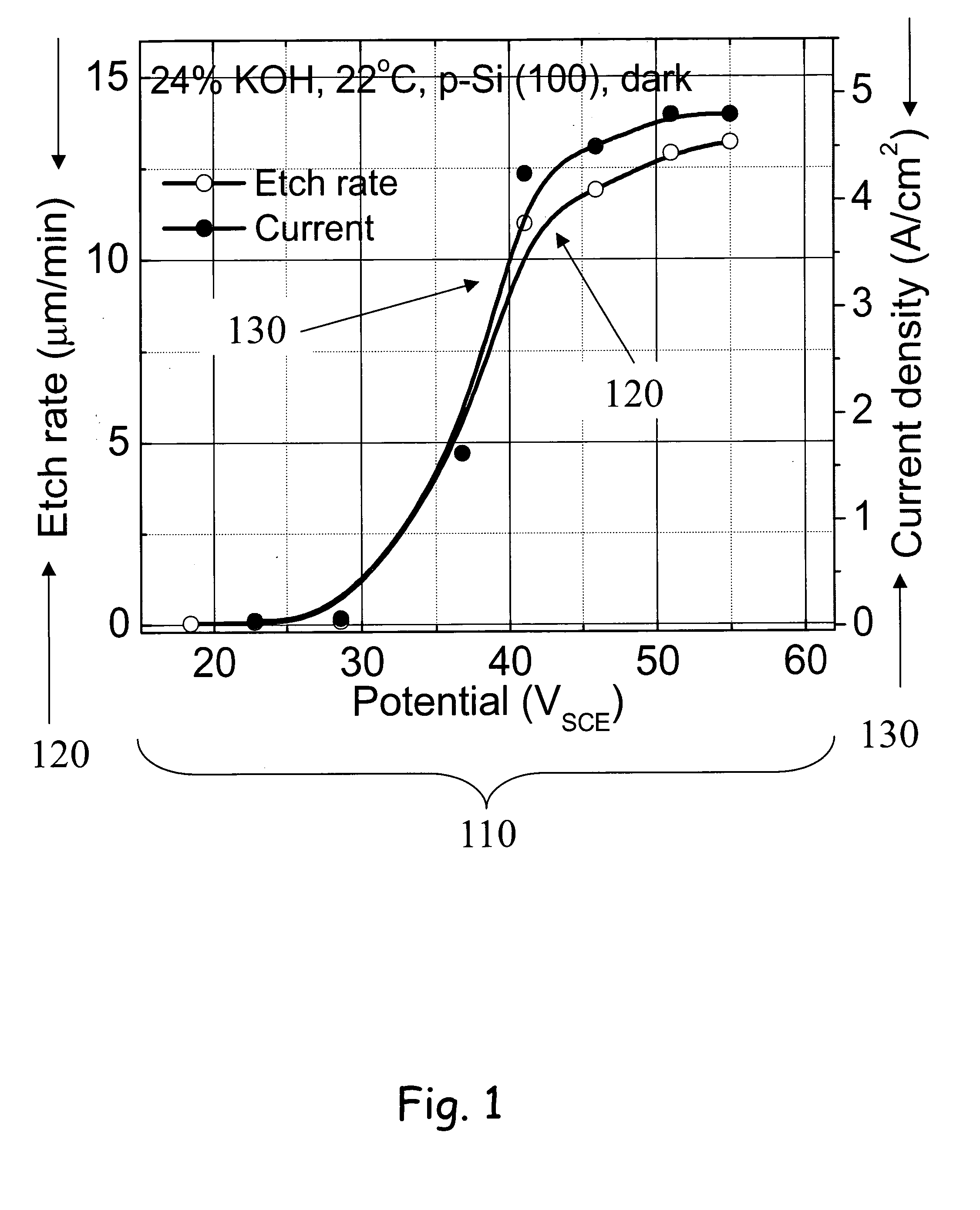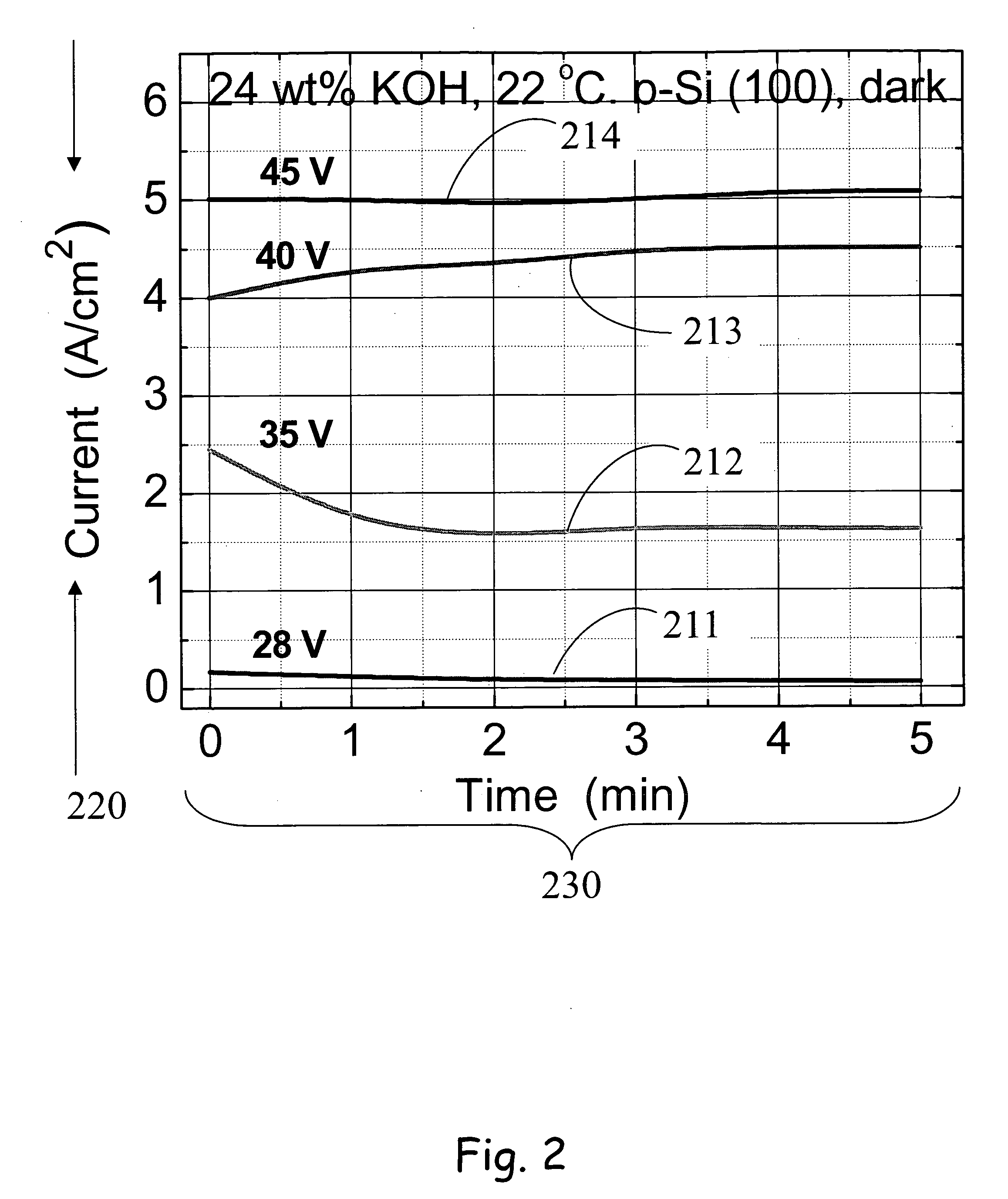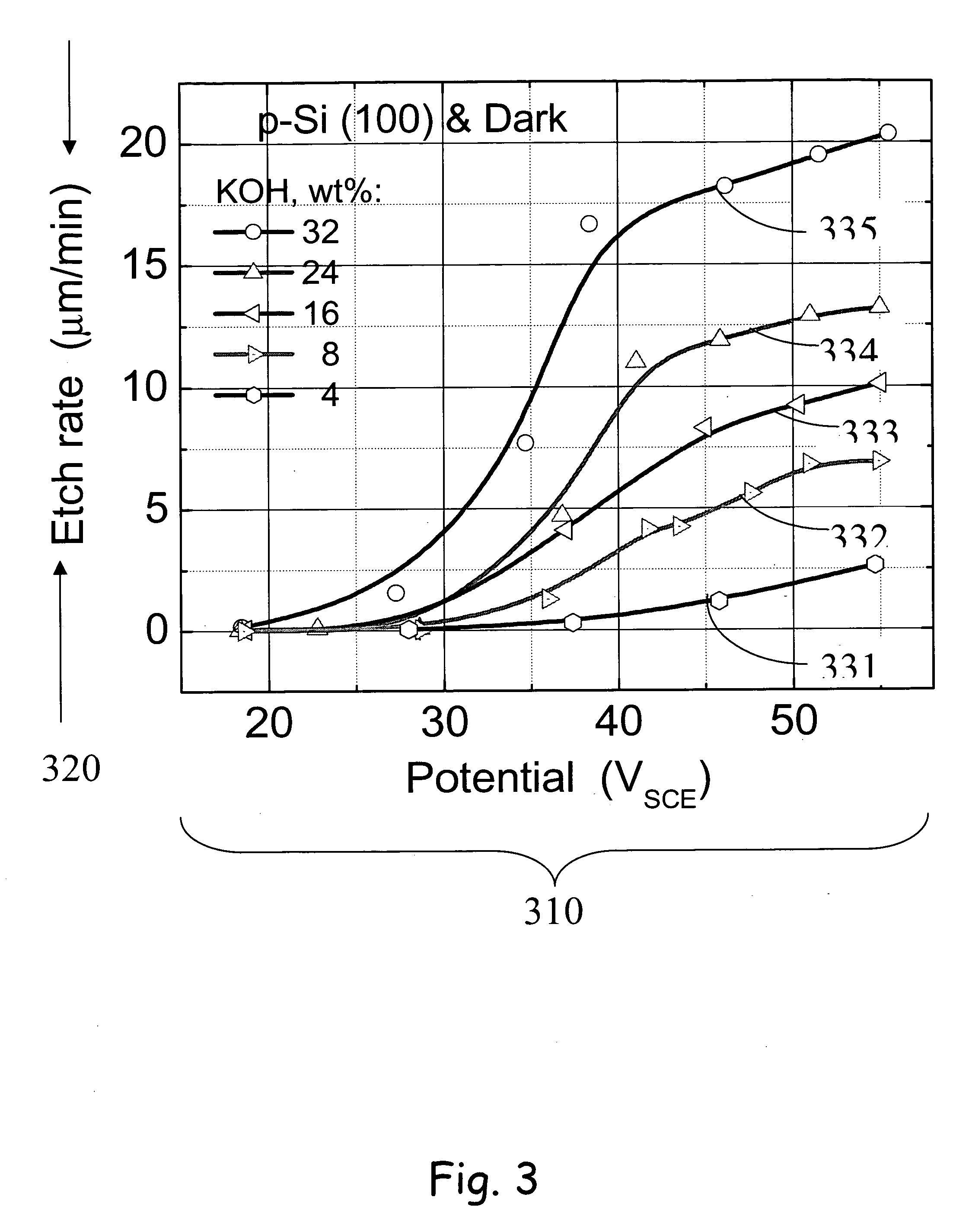Method for electrochemical etching of semiconductor material using positive potential dissolution (PPD) in HF-free solutions
a technology of positive potential dissolution and electrochemical etching, which is applied in the direction of electrical machining apparatus, cells, electrical equipment, etc., can solve the problems of undesirable use of media containing hf and inability to use positive (anodic) biasing
- Summary
- Abstract
- Description
- Claims
- Application Information
AI Technical Summary
Benefits of technology
Problems solved by technology
Method used
Image
Examples
Embodiment Construction
[0028] The principles and operation of a method and an apparatus according to the present invention may be better understood with reference to the drawings and the accompanying description, it being understood that these drawings are given for illustrative purposes only and are not meant to be limiting.
[0029]FIG. 1 is a graph of the effect of applied potential 110 on the etch rate 120 and current density 130 of p-type Si [(100) surface orientation] in 24 wt % KOH, constructed in accordance with the principles of the present invention. Silicon is being rapidly etched in solutions (e.g., aqueous, non-aqueous, molten salts and inorganic media) under an applied positive potential higher than 10 V. FIG. 1 presents both etching rate 120 and current density 130 of p type silicon in a solution of 24 wt % KOH performed in the dark. Etching rates 120, measured by weight loss evaluation, and measured current density 130 are seen to generally coincide and present similar profiles. It can also ...
PUM
| Property | Measurement | Unit |
|---|---|---|
| Speed | aaaaa | aaaaa |
| Electric potential / voltage | aaaaa | aaaaa |
| Current density | aaaaa | aaaaa |
Abstract
Description
Claims
Application Information
 Login to View More
Login to View More - R&D
- Intellectual Property
- Life Sciences
- Materials
- Tech Scout
- Unparalleled Data Quality
- Higher Quality Content
- 60% Fewer Hallucinations
Browse by: Latest US Patents, China's latest patents, Technical Efficacy Thesaurus, Application Domain, Technology Topic, Popular Technical Reports.
© 2025 PatSnap. All rights reserved.Legal|Privacy policy|Modern Slavery Act Transparency Statement|Sitemap|About US| Contact US: help@patsnap.com



